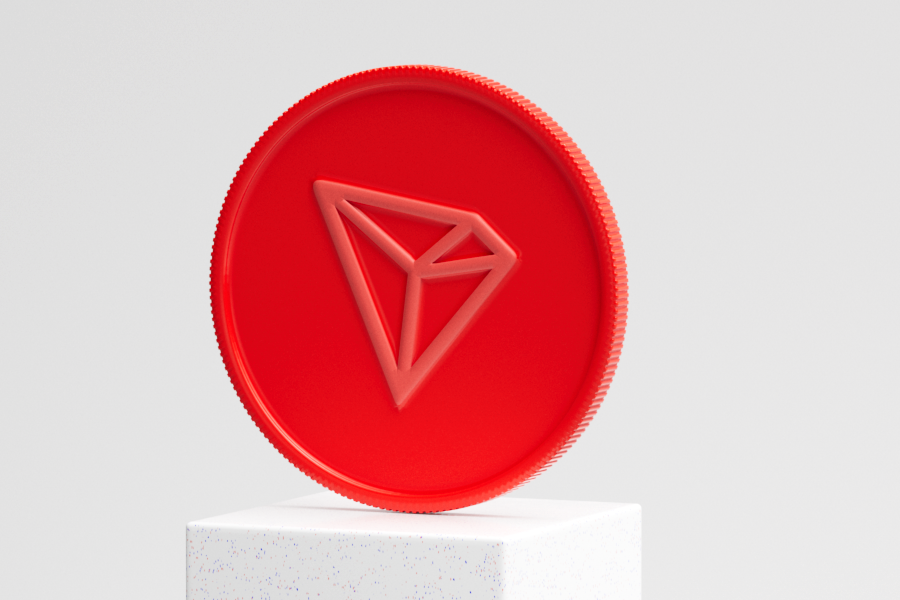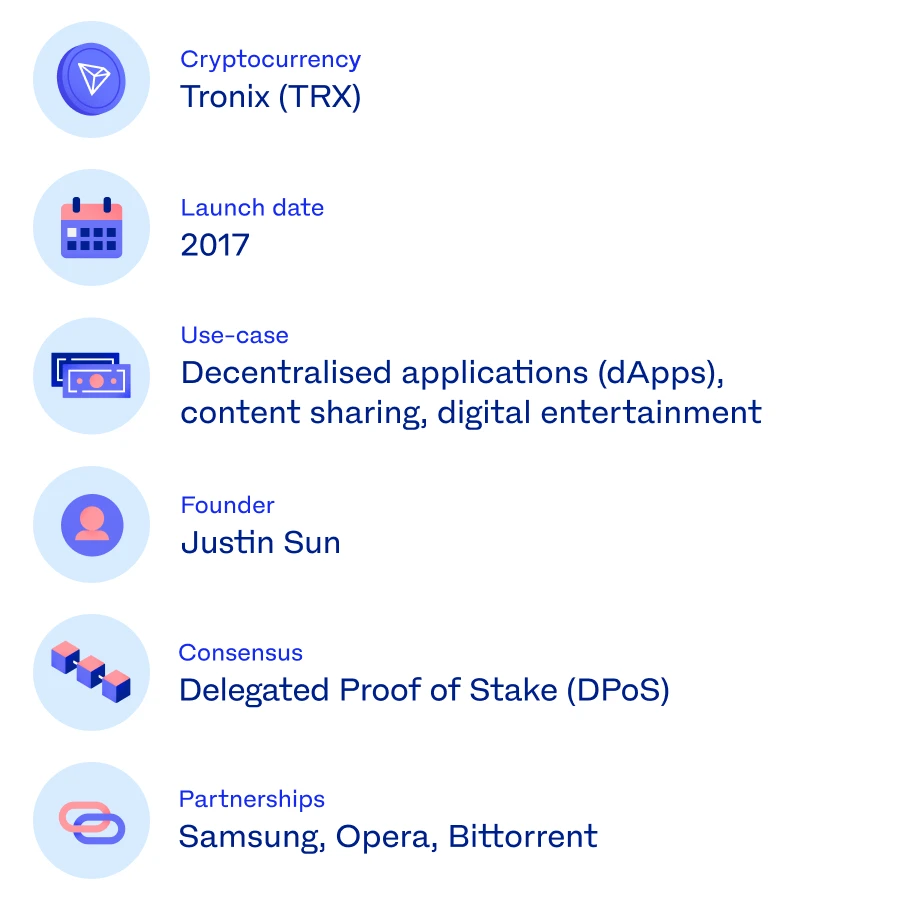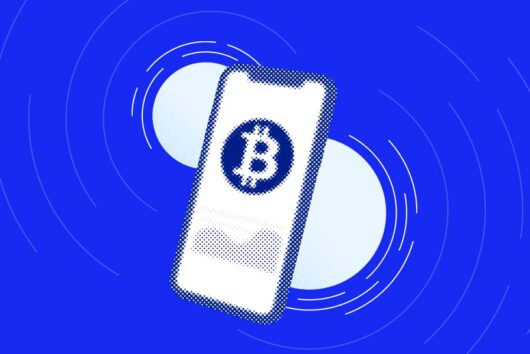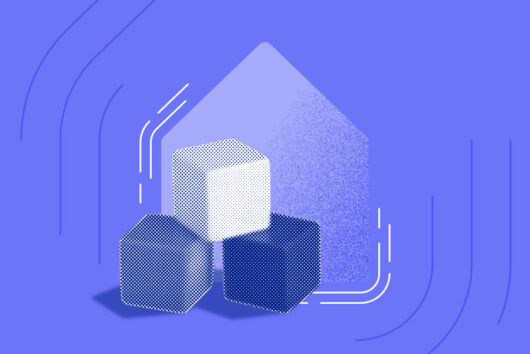What is Tron (TRX)?


Tron aims to be the foundation of a decentralised internet where users can create decentralised applications (dApps) and content without the need for centralised intermediaries. Its slogan is “Decentralise the Web” and their primary focus is entertainment, with content creators and consumers able to interact directly.
Who created Tron?
Entrepreneur Sun Yuchen, better known as Justin Sun, founded Tron in early 2017. Before this, Sun had already made a mark in China with the creation of audio content app Peiwo. He has also served as a representative for Ripple in 2015, the company behind the XRP cryptocurrency, and as the CEO of BitTorrent, the file-sharing program.
How does Tron work?
The Tron protocol works in a similar way to other dApp operating systems such as Ethereum, using smart contracts to enable developers and content creators to publish their work directly onto the blockchain, where it is stored in a secure and immutable manner.
Additionally, the Tron network allows peer-to-peer interactions, enabling direct communication and transactions between creators and consumers without intermediaries. By removing the reliance on centralised entities, Tron empowers users to have greater control over their data and content, creating a more democratic internet ecosystem.
Delegated Proof of Stake (DPoS)
Tron uses a consensus mechanism known as Delegated Proof of Stake (DPoS) to secure the network and validate transactions. In the DPoS model, holders of TRX, the native cryptocurrency of the Tron network, vote for a select number of delegates who are responsible for validating transactions and maintaining the network. These delegates, also known as super representatives, govern the Tron network.
Transactions in the Tron network are validated by 27 super representatives that are entrusted to maintain the transaction history. These super representatives are chosen every six hours, and if chosen, are able to earn TRX generated by the protocol.
This differs from Proof of Stake (PoS) in that in PoS, all holders have the opportunity to participate in block validation by staking their tokens. DPoS aims to improve scalability and efficiency by delegating block validation to a smaller group of trusted entities, while PoS seeks to achieve consensus by allowing any token holder to validate transactions based on the number of tokens they hold.
What is the Tron Virtual Machine (TVM)?
The Tron Virtual Machine (TVM) is a computer system and execution environment that allows developers to deploy and execute smart contracts on the Tron blockchain. Similar to Ethereum’s Virtual Machine (EVM), TVM provides the necessary resources and tools for developers to write smart contracts in programming languages like Solidity that can be executed by a virtual machine.
What is the native cryptocurrency of the Tron network?
The native cryptocurrency of the Tron network is called TRX. The cryptocurrency powers its governance, security, and economic systems. TRX incentivises active participation, secures the network, and allows users to interact with and contribute to the broader TRX ecosystem.
TRX is available to buy and sell on the Luno app and website.
Useful tools
*Investing in cryptocurrency may result in the loss of capital as the value can fluctuate.
 Discover
Discover Help Centre
Help Centre Status
Status Company
Company Careers
Careers Press
Press


